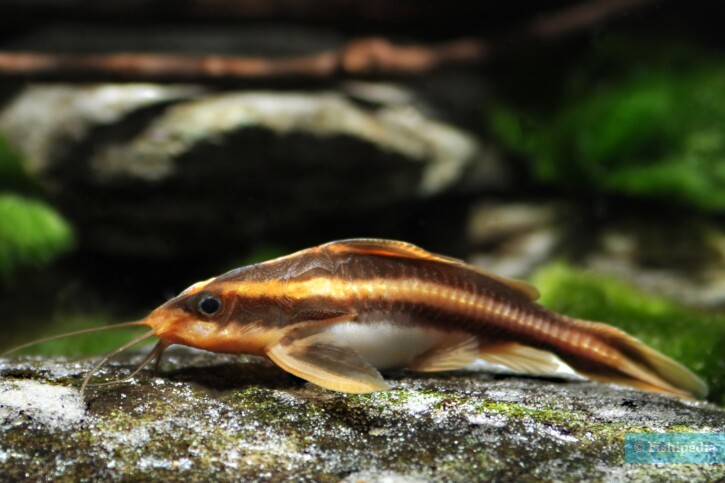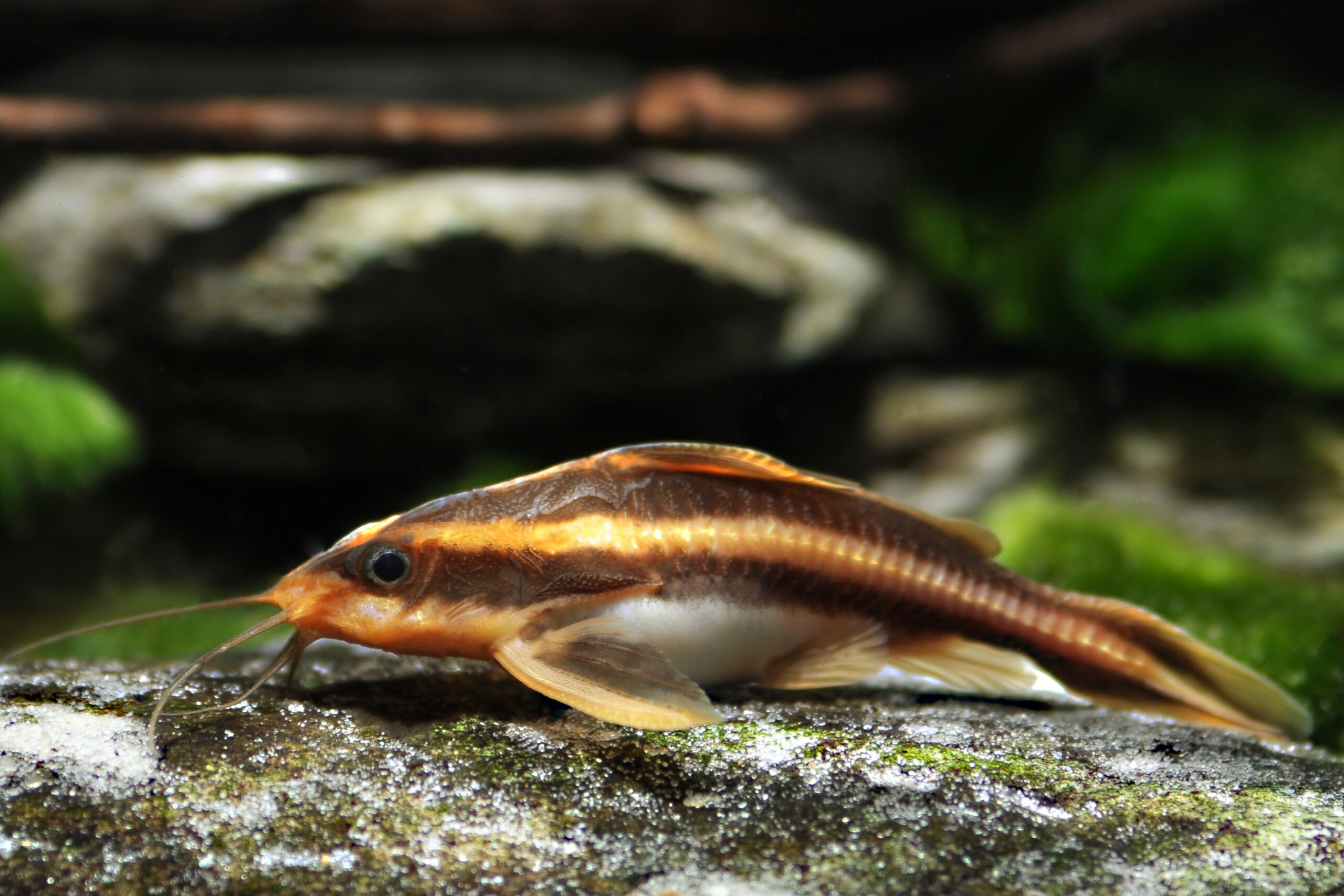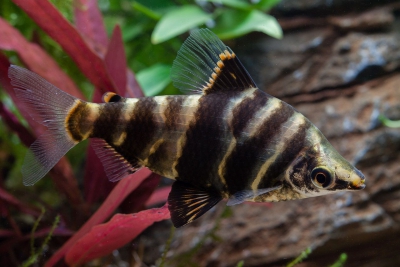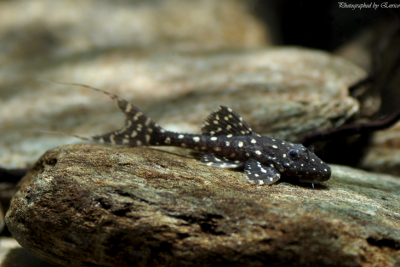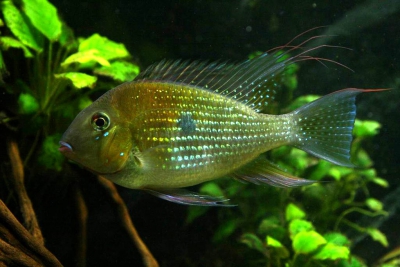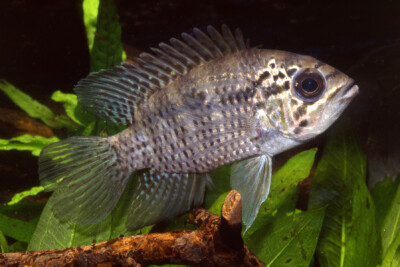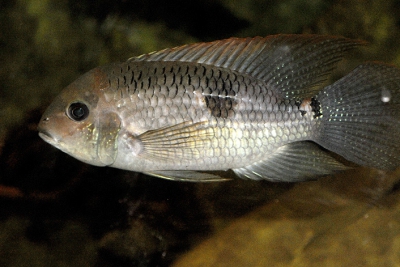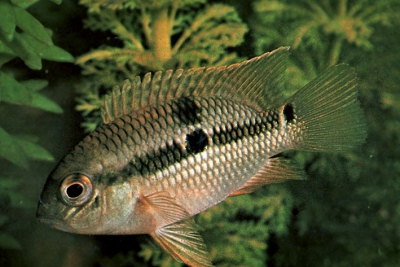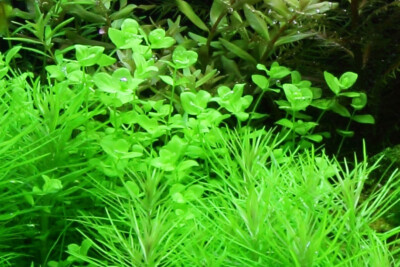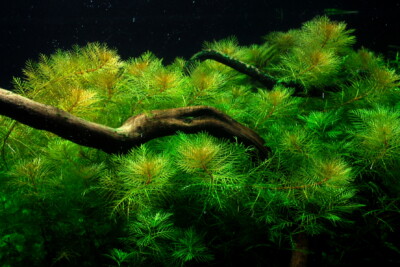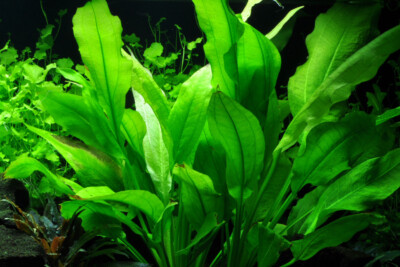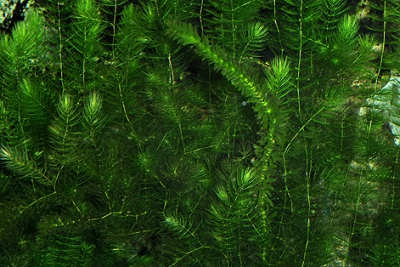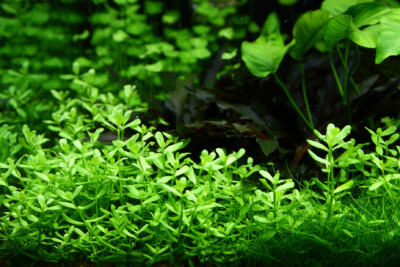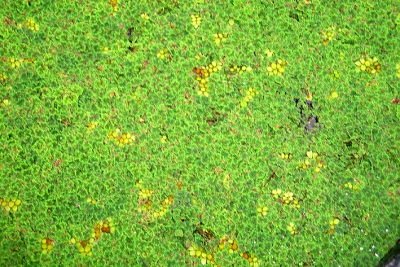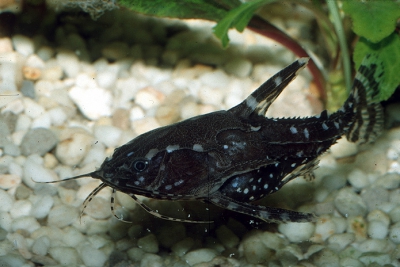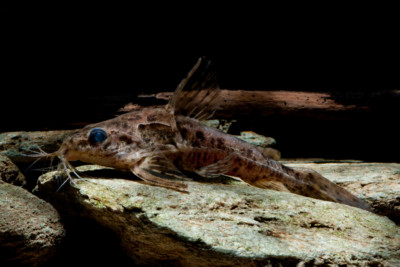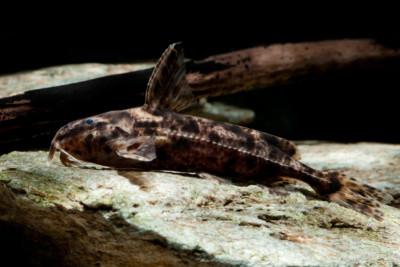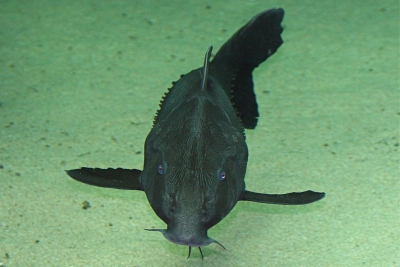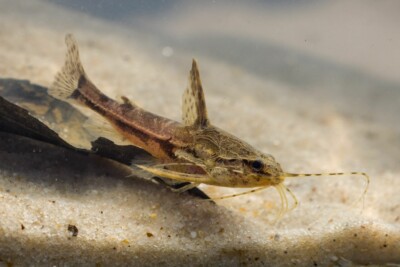Introduction
The Platydoras costatus, commonly known as the Raphael catfish, is a tropical freshwater catfish native to South America. It may also be referred to as Doras dentatus, Mystus ascita, Platydoras dentatus, or Silurus costatus. Fairly popular in the aquarium hobby, it is often confused with Platydoras armatulus, which can be distinguished by its characteristic yellow stripes on the head.
This species is sometimes locally caught for consumption.
Who is it?
Morphology
-
Average size20 cm
-
Maximum size25 cm
-
Mimicrysand
-
Patternhorizontal stripes
-
Average size20 cm
-
Maximum size25 cm
-
Mimicrysand
-
Patternhorizontal stripes
How to recognize This fish ?
This fish has the particularity to possess several pairs of barbels, which allow him to search the bottom and to detect the food thus moved.
The body is robust and characterized by two horizontal brown bands, one passing through the eye. The body is orange and dark brown.
Sexual dimorphism
Females may have a more rounded abdomen than males.
Behaviour & Life cycle
-
dietomnivorous with carnivorous tendency
-
Sociabilitygregarious
-
territorialNo
-
Way of livingnocturnal
This species is known to emit sounds easily audible by humans.
The Raphael catfish is gregarious by nature. It is found on the bottom and particularly favors sandy areas where it hunts mollusks and crustaceans. It supplements its diet with various plant debris. When in danger, it may bury itself in the sand or seek refuge in crevices among rocks.
It is a nocturnal species that typically stays concealed during the day. It appears to inhabit areas with strong currents.
A behavior that is still seldom observed in freshwater, juveniles are known to act as cleaner fish, especially with predatory species like Hoplias.
Reproduction
-
Reproductiondont le mode de reproduction est encore inconnu
The Raphael catfish is a fish whose reproductive mode is still unknown.
Harmless species
This species does not represent any particular threats to humans when encountered in its natural environment.
Origin and distribution
Conservation status of populations (IUCN)
What is its habitat?
Natural environment characteristics
-
Temperature24 - 30 °C
-
pH (acidity)5.8 - 7.5
-
gh (hardness)2 - 20
-
FlowStrong
Biotope presentation
The Raphael catfish naturally resides in slightly acidic water. The species particularly favors clear waters with strong currents and rapids. The biotope is generally composed of sand and rocks.
Main recommendations for fishkeeping
Deontology
In order to preserve wildlife, if you acquire this animal, it must not be released into the wild. See also, the Fishipedia charter.
Fishipedia supports the practice of responsible and environmentally friendly aquarium keeping. We encourage maintenance if it is motivated by a desire to understand the biological functioning of living things and if it is done with respect for animal life.
We believe that aquaristics is an opening to the discovery of aquatic environments, especially freshwater, and that this knowledge is necessary to better protect and respect these environments. Logically, we refute the compulsive purchase of animals that would not find a sufficient and / or adapted place in the host aquarium.
Our recommendations
-
Min volume800 liters
-
Population min4
-
Temperature24 - 30 °C
-
pH (acidity)5.8 - 7.5
Characteristics
-
Difficulty breedingmoderate
-
Robustnesstolerant
-
Behaviourpeaceful
-
Availabilityoccasional
General reminders
It is strongly advised to read the complete dedicated file and to get information on the feedbacks of maintenance of the envisaged animal, this to avoid any potential conflict whose end result is generally the death of the individual (or the other inhabitants). It is important not to overload your aquarium to limit pollution. This will make maintenance easier.
In nature, animals are subject to weather conditions and live in waters with variable characteristics. The recommendations offered by our team for aquarium maintenance are a guidance and cannot be assimilated to scientific datas.
General reminder on maintenance datas
Le démarrage d'un aquarium est une partie primordiale pour l'équilibre et le bien-être des poissons. Lorsque l'on met en eau un aquarium, l'eau passe naturellement par un cycle biologique : le cycle de l'azote. Celui-ci dure environ trois semaines. Tous les 2 jours, nous vous conseillons de tester votre eau jusqu'à ce que le taux de nitrite soit à zéro pendant plusieurs jours d'affilée.
Pour accélérer ce cycle, vous pouvez utiliser un activateur de bactéries comme JBL Denitrol. Cette solution riche en bactéries vivantes et enzymes permet une mise en place rapide du cycle de l'azote. Les poissons peuvent alors être introduits plus rapidement.
Il est important de tester l'eau de son aquarium régulièrement pour maintenir un environnement sain pour les poissons et les autres habitants. Les tests d'eau permettent de mesurer les niveaux de différents paramètres tels que le pH, la dureté totale, ainsi que les taux de nitrates, de nitrites et d'ammoniaque.
Pour réaliser ces tests, vous pouvez utiliser des produits d'analyse spécialisés tels que JBL ProScan qui permet de réaliser un diagnostic de l'eau directement via un smartphone. Il existe également des coffrets de tests plus classiques de bandelettes, comme JBL PROAQUATEST.
En cas d’usage de l’eau du robinet, vous pouvez utiliser un conditionneur d’eau de type Biotopol de JBL pour éliminer les substances nocives comme le chlore, le cuivre, le plomb et le zinc. Une eau trop dure ou trop calcaire peut être inadaptée à de nombreuses espèces tropicales d’eau douce. Si nécessaire, vous pouvez la couper avec de l’eau osmosée ou de pluie filtrée afin d’obtenir une dureté plus adaptée aux besoins de vos poissons et de vos plantes. Les conditionneurs d'eau garantissent une meilleure santé aux poissons et une meilleure croissance des plantes.
Chlorine and chloramine are dangerous for the health of animals. Used to disinfect water, these agents are present in significant quantities in tap water. We recommend using an anti-chlorine agent every time you change the water. In addition to chlorine, treatments and medicines sold for aquarium use sometimes contain dangerous heavy metals in high doses.
Specific needs for the Raphael catfish
The Raphael catfish is a species which lives naturally at a temperature between 24 °C and 30 °C. Nitrate levels should remain below 50mg/L. To keep the water clean and unpolluted, plan on changing 20% to 30% of the water volume each month.
The breeding of this species is accessible on condition of being well informed about its needs in aquarium . Any cohabitants must be chosen with care to avoid the loss of animals.
This species is generally available in specialized shops or from aquarium clubs. Specimens that have been bred for a long time are easier to breed, but special water parameters must be respected.
Barbel fish
Formal incompatibilities
Cohabitation & Environment
Being a gregarious fish, it is advisable to install at least 4 individuals in an aquarium of 800 liters minimum. Group maintenance is a prerequisite to ensure their well-being. Lonely individuals tend to quickly become stressed and become especially susceptible to disease. Although sometimes certain groups can "merge", mixing several gregarious species living in the same zone of life is not recommended if the volume is not consequent.
The Raphael catfish is a peaceful species that generally does not exhibit behavioral problems in a community aquarium.
As previously said, The Raphael catfish is a species that lives naturally in the current. Thus, we advise the installation of an oversized filtration system (10 to 20 times the volume of the tank) in order to guarantee a strong current and especially a strong oxygenation. A venturi system will improve the dissolved oxygen rate during summer.
To best reproduce the biotope of this species, you can cover the bottom of the tank with sand and put a pile of stones to form caves.
Tips for feeding
The Raphael catfish is omnivorous with carnivorous tendency.
This species can eat dry food (flakes, pellets), fresh food and frozen food. To avoid deficiencies, it is recommended to vary the types of food.
Feed animals in moderation to maintain good water quality. Meals should be eaten within 2–3 minutes, served in several small portions rather than a single large ration.
Uneaten food quickly decomposes, releasing ammonia, nitrites, and nitrates, which disturb the aquarium’s biological balance.
Make sure each species can access food properly, slower or bottom-dwelling individuals may require targeted feeding.Food recommendations from our partner JBL - Products PRONOVO
-
Granules
-
Flakes
Reproduction protocol
-
egg-laying protectionNo
Hybridization risks
In general, it is advised not to mix several species of the same genus or different varieties of the same species, to avoid the risks of hybridization.
These animals might interest you
These plants might interest you
Plants play a crucial role in aquariums, both for their ability to filter water by absorbing excess nutrients and for their aesthetic contribution. They provide fish with natural hiding places, can serve as breeding sites, and generally help maintain the overall balance and optimal conditions of the aquarium. The selection presented here includes species from the same regions as the species described on this page, although they do not necessarily come from its exact natural biotope.
To go further
Sources & Contributions
Participation & Validation
The Fishipedia team and specialist contributors are committed to providing high-quality content. However, although the information comes from scientific sources or testimonials from specialists, the cards may contain inaccuracies.

Benoit Chartrer
Translation
Translation done with the valuable contribution of our translators, who make this information available to a wider audience. We sincerely thank them for their commitment.
Bibliographic references
- - GBIF
- - Platydoras brachylecis, a new species of thorny catfish (Siluriformes: Doradidae) from northeastern Brazil - Nivaldo M. PiorskiI - Julio C. GaravelloII - Mariangeles Arce H. - Mark H. Sabaj Pérez - Scielo - 2008.
- - Record of cleaning behavior by Platydoras costatus (Siluriformes: Doradidae) in the Amazon Basin, Brazil - Lucélia Nobre CarvalhoI - Rafael ArrudaII - Jansen Zuanon - Scielo - 2003.
Scientific partners
Species of the same family
